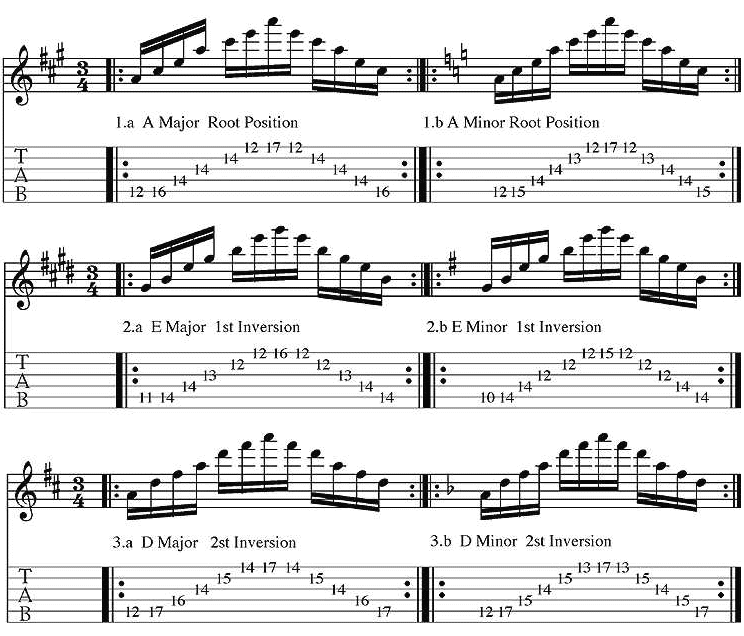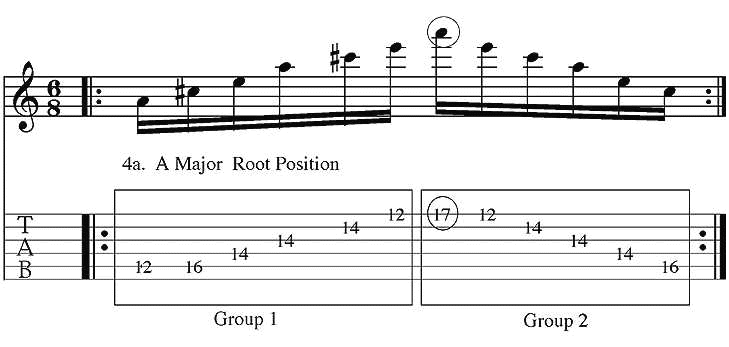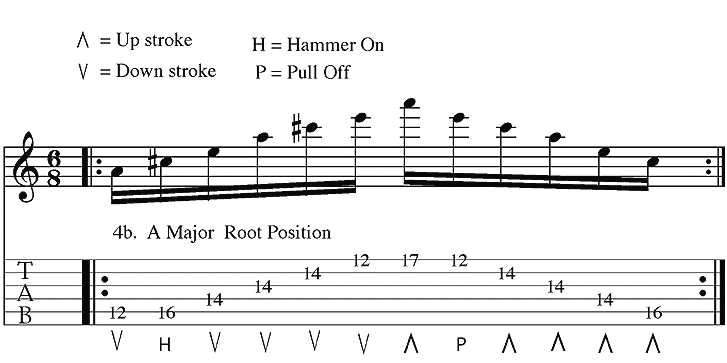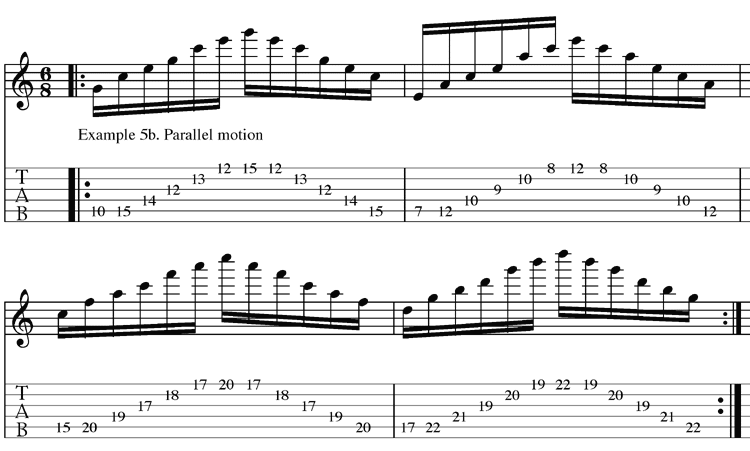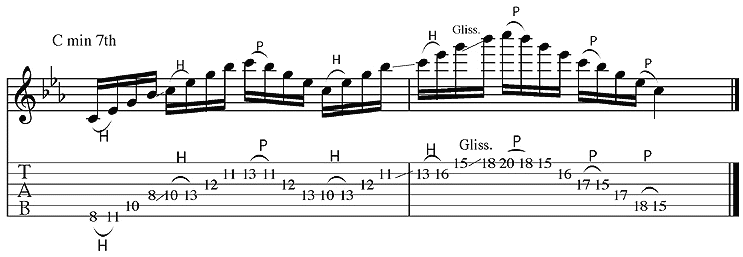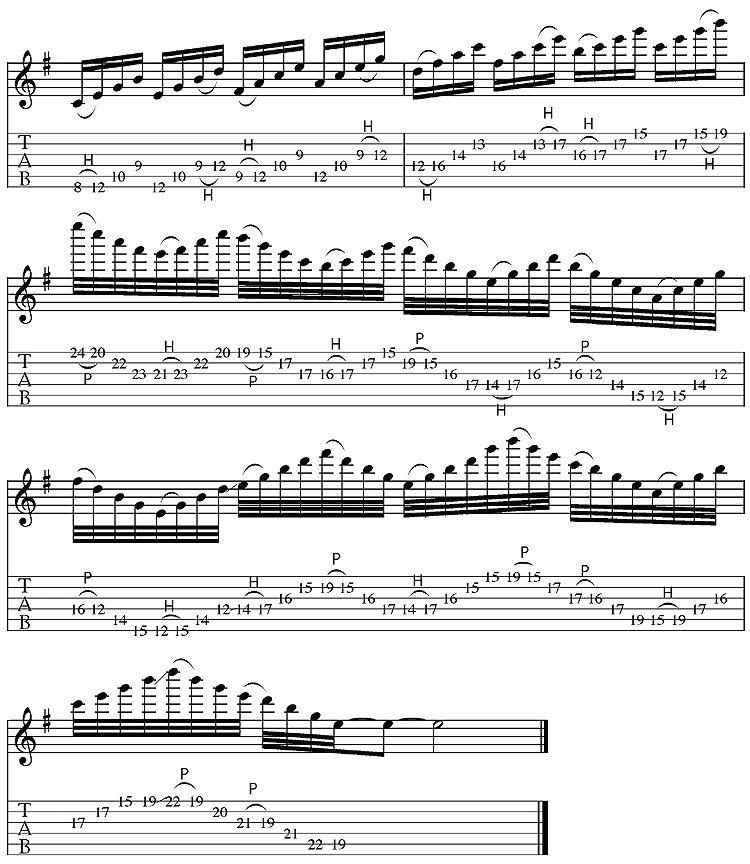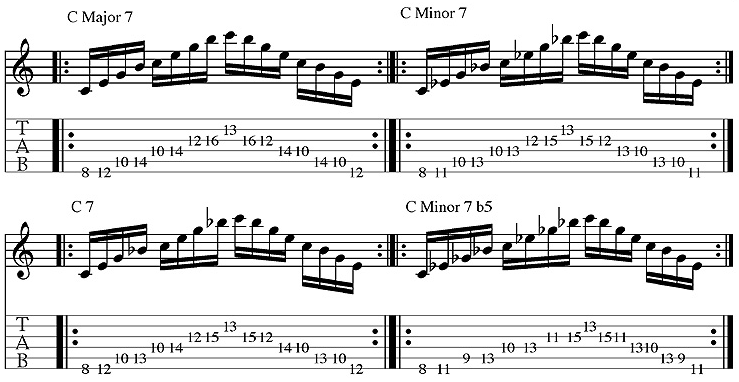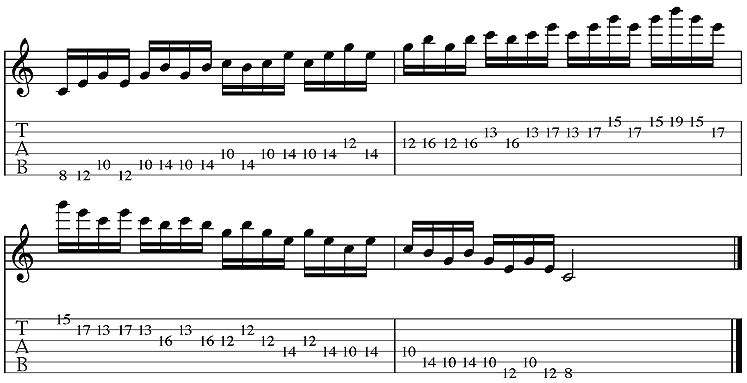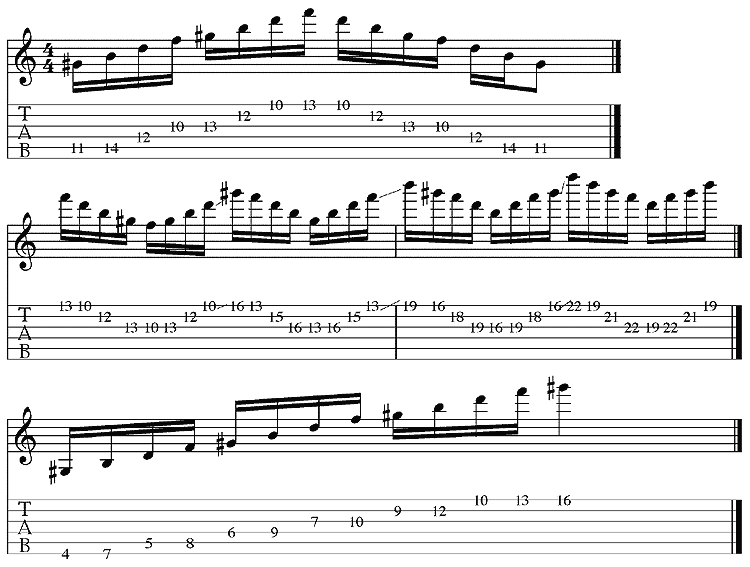Sweep Picking |
By Neal Nagaoka |
| This is a technique that was adapted to guitar from violin. A commonly used technique that is used to execute arpeggios. Many people tend to think that this technique sounds very Classical sounding which it can if used with a Classical sounding progression. Well hopefully this will break that myth but I suggest we take these in steps so we will start with the typically generic sounding Classical examples first. |
Lets start with the basic triads. Major shape and the Minor shape. I usually tend to relate them with open chord shapes. What I mean by this is for example, take 1a. This pattern is a A major Arpeggio but if you look closly, the pattern reminds of an A Barre chord at the 12th fret or you can look at it as an open A chord but 12 frets higher. Example 1b. is an A minor arpeggio that looks similar to an open A minor chord. Example 2a looks like an E chord and 3a looks like a D chord while 2b looks like an E minor chord and 3b looks like a D Minor Chord.
Here is a couple of video examples on my youtube page using some of these techniques. |
|
